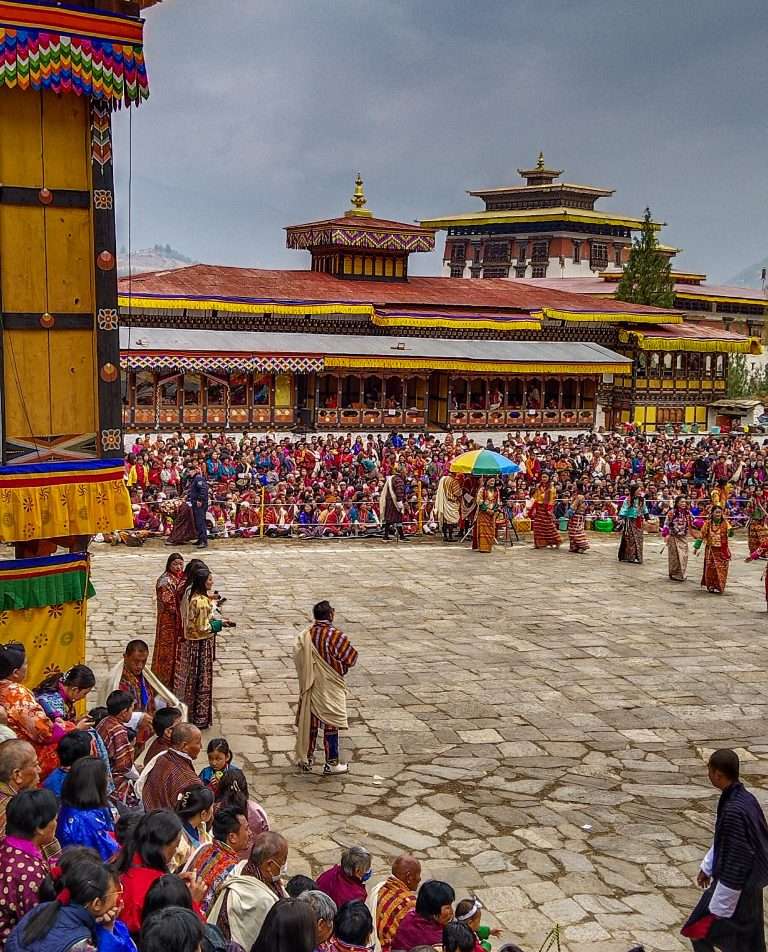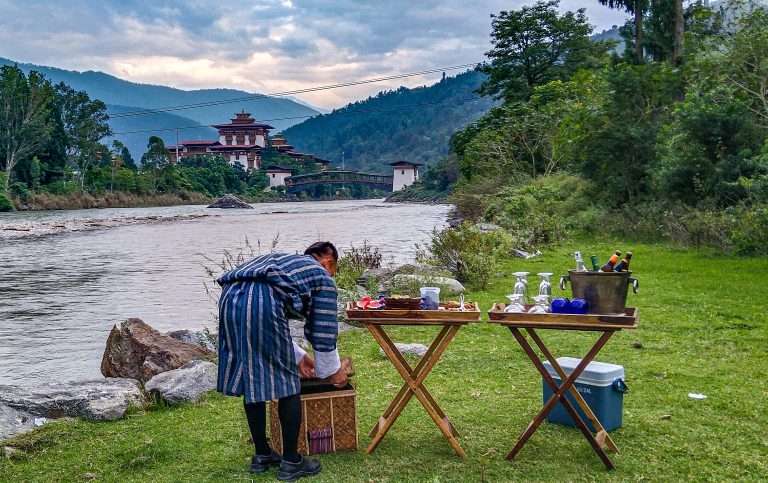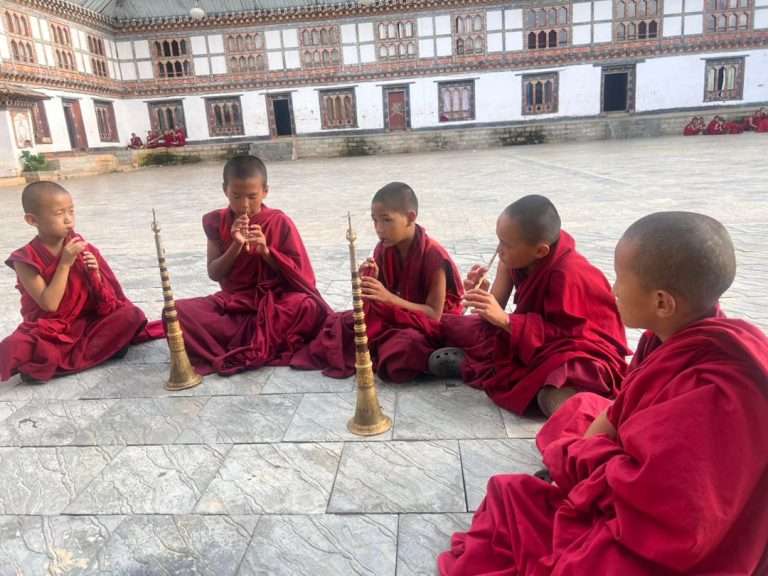Bhutan, the Land of the Thunder Dragon, is renowned for its rich cultural heritage and deeply spiritual traditions. Among its many captivating festivals, the Punakha Tshechu stands out as a truly mesmerizing spectacle. This annual festival, held in the stunning Punakha Dzong, offers a unique glimpse into Bhutanese Buddhist culture and is an experience you simply cannot miss.
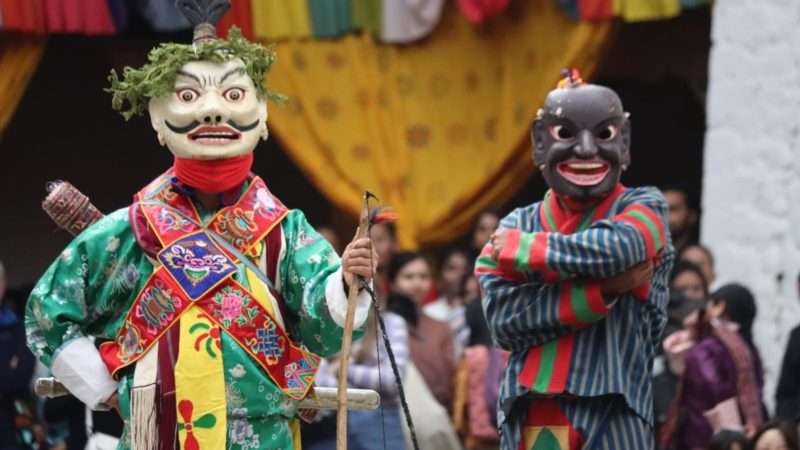
What is the Punakha Tshechu?
The Punakha Tshechu is a religious festival celebrated to commemorate Guru Rinpoche, also known as Padmasambhava, who introduced Buddhism to Bhutan in the 8th century. It’s a vibrant display of colorful costumes, intricate masks, and sacred dances, all performed by monks and laypeople.
Why is it so special?
- The Setting: The Punakha Dzong, a magnificent fortress located at the confluence of the Pho Chhu and Mo Chhu rivers, provides a breathtaking backdrop for the festival. Its architectural grandeur and serene surroundings amplify the spiritual atmosphere.
- The Dances: The Tshechu features a variety of sacred dances, known as Cham, each with its own symbolic meaning. These dances, performed with great precision and devotion, tell stories from Buddhist scriptures and depict the triumph of good over evil. Some of the most notable dances include:
- Guru Tshengye Cham: Eight manifestations of Guru Rinpoche.
- Shawa Shachi: The dance of the stags.
- Raksha Mangcham: The dance of the judgment of the dead.
- The Thongdrol: On the final day, a giant embroidered thangka, or thongdrol, depicting Guru Rinpoche, is unfurled. This sacred display is believed to bestow blessings upon all who witness it.
- The Atmosphere: The Punakha Tshechu is not just a performance; it’s a deeply spiritual experience. The air is filled with the sounds of chanting, the rhythmic beats of drums and cymbals, and the fragrant smoke of incense. The devout Bhutanese people, dressed in their finest traditional attire, add to the festival’s authentic charm.
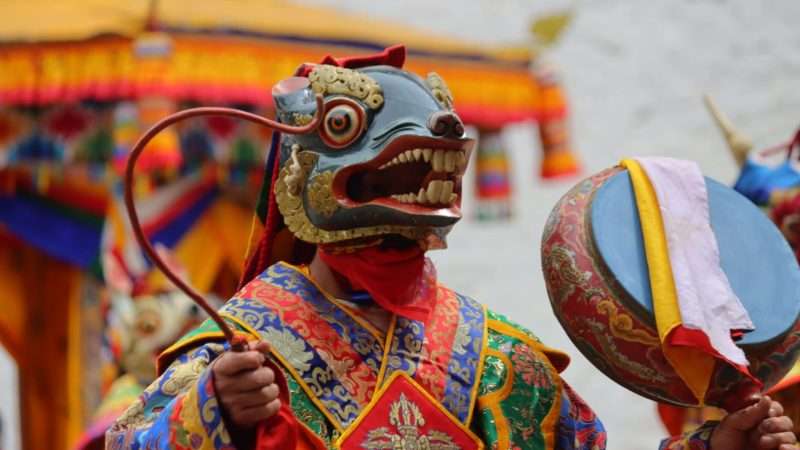
Planning Your Visit:
- Timing: The Punakha Tshechu typically takes place in February or March, following the Bhutanese lunar calendar. It’s essential to check the exact dates beforehand.
- Permits: Bhutan requires all tourists to obtain a visa and travel through a licensed tour operator. Your tour operator will handle all the necessary arrangements, including permits and accommodation.
- Respectful Attire: Dress modestly and respectfully when attending the festival. Avoid wearing hats and sunglasses during the sacred dances.
- Photography: While photography is generally allowed, it’s crucial to be respectful and avoid using flash during the dances. Ask your tour guide for clarification on any restrictions.
- Immerse Yourself: Take the time to observe the rituals, interact with the locals, and absorb the spiritual atmosphere. The Punakha Tshechu is an opportunity to experience the heart and soul of Bhutanese culture.
Why OMSHA Travel?
At OMSHA Travel, we specialize in creating authentic and unforgettable travel experiences in Bhutan. We can arrange your entire Punakha Tshechu experience, ensuring you have a seamless and enriching journey. From obtaining permits and booking accommodations to providing knowledgeable guides who can explain the significance of the festival, we’ll take care of every detail.

Don’t miss the chance to witness the Punakha Tshechu, one of Bhutan’s most spectacular and spiritually significant festivals. Contact OMSHA Travel today to start planning your unforgettable Bhutanese adventure!


